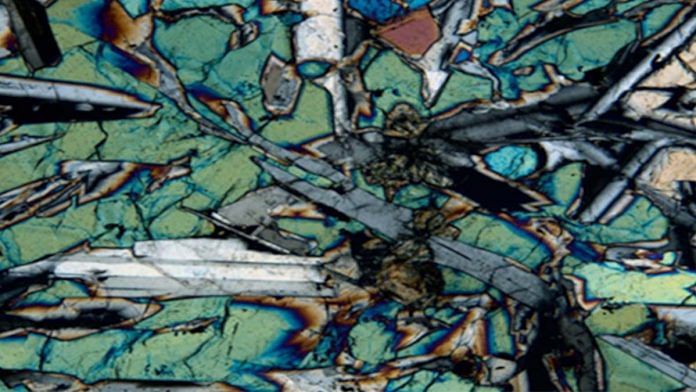Bengaluru: An international team of researchers have unearthed a new kind of rock on the sea floor while drilling through the Pacific Ocean. The rock is a type of basalt, which is formed from the rapid cooling of fast flowing lava that contains iron and magnesium.
To find the new rock, the research team — comprising members from Australia, US, Japan, Germany, UK, Switzerland, and China — drilled 6 km down to the ocean floor of the Amami Sankaku Basin in the Japanese Sea, about 1,000 km southwest of Japan’s Mount Fuji volcano.
They then further drilled 1.5 km into the ocean floor, extracting samples of the kind that scientists had never accessed before.
The area is a part of the ‘ring of fire’ subduction zone around the Pacific, a 40,000km-long tectonically active zone that is home to several annual volcanic eruptions and earthquake activity. The team had been looking for basalt that was formed during the early days of eruptions in this region nearly 50 million years ago.
The findings have been published in the Nature Communications journal.
Also read: Hitchhiker worms in fig trees use ‘perfume’ to find a ride on wasps, fly to safety
Newly-discovered basalt has distinct chemical, mineral makeup
Basalt is a fine-grain rock that is formed when mafic lava, which is rich in magnesium and iron, is exposed at the surface. Almost 90 per cent of all volcanic rock on earth is basaltic in nature, and has formed large igneous provinces (large areas of land now solidified over millennia) such as the Deccan Traps (India), Hawaii, and Iceland.
It is also commonly found on other planetary bodies like the moon and Mars.
Basaltic magma is formed due to the pressure present in the upper mantle in the Earth’s interior. Due to the weight of overhead rocks, the melting point of the mantle is raised, causing hot deformed rock to move upwards.
However, the newly discovered type of basalt is distinct from the ones that are already known, both in its chemical as well as mineral makeup.
“The rocks that we recovered are distinctly different to rocks of this type that we already know about,” said co-author Ivan Savov, from the University of Leeds’ Institute of Geophysics and Tectonics, in a statement. “In fact, they may be as different to Earth’s known ocean floor basalts as Earth’s basalts are to the Moon’s basalts.
“Now that we know where and how this rock type is formed, we anticipate that many other rocks that we know were originally formed by ocean floor eruptions will be re-examined and potentially alter our wider understanding of the basalt formation,” said Savoy.
There have hardly been rocks of this kind that have been discovered in millions of years and this basalt too lay buried deep beneath kilometres thick sediment at the bottom of the ocean.
The eruptions that created the newly discovered basalt are believed to have occurred very quickly, within just 1-2 million years, and spanned an area as wide as Western Europe.
Also read: ‘It’s like science fiction come to life’: NASA engineers tell how Mars missions are pulled off




Does not give the chemical differences
Send more information..as well…